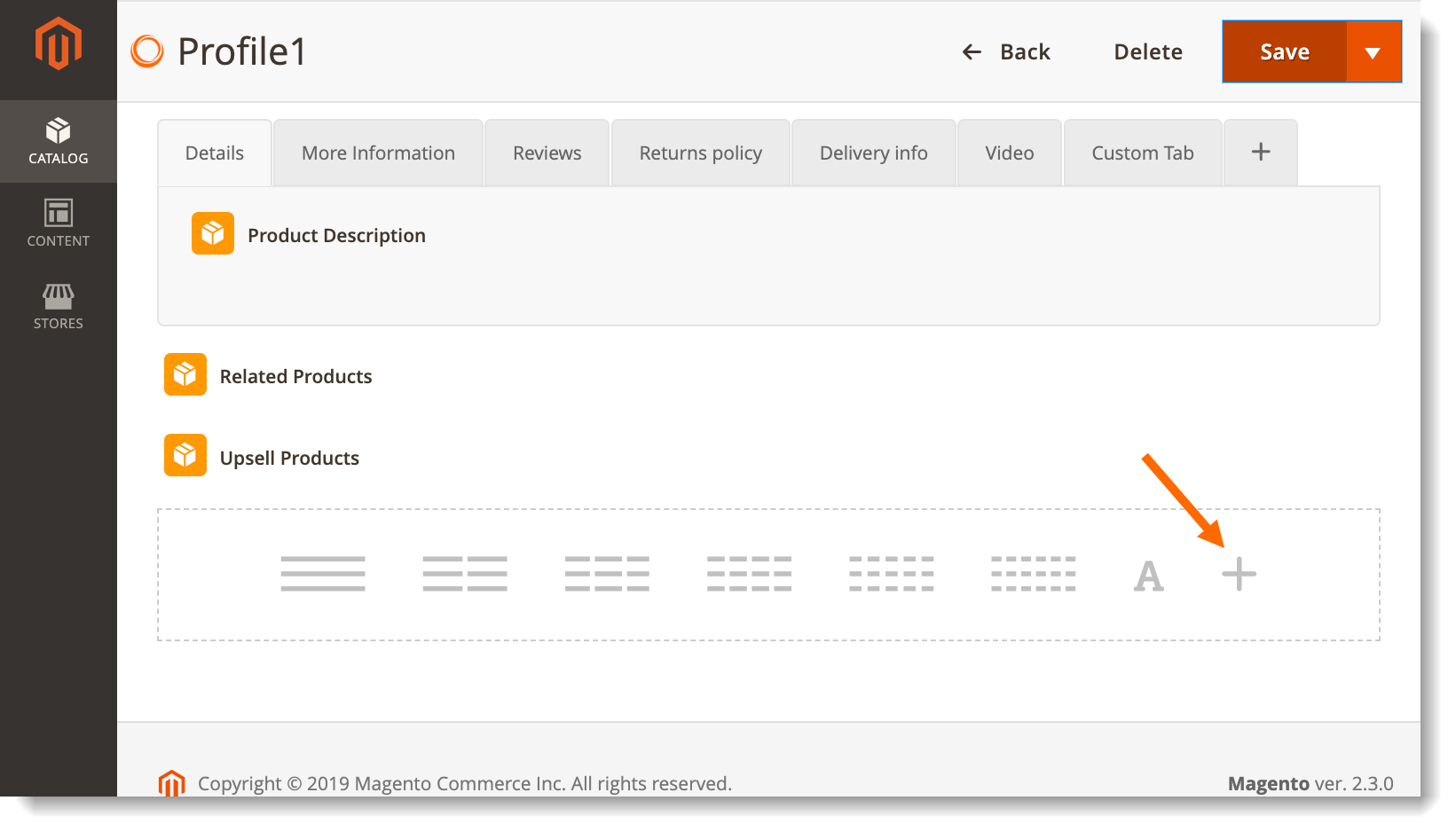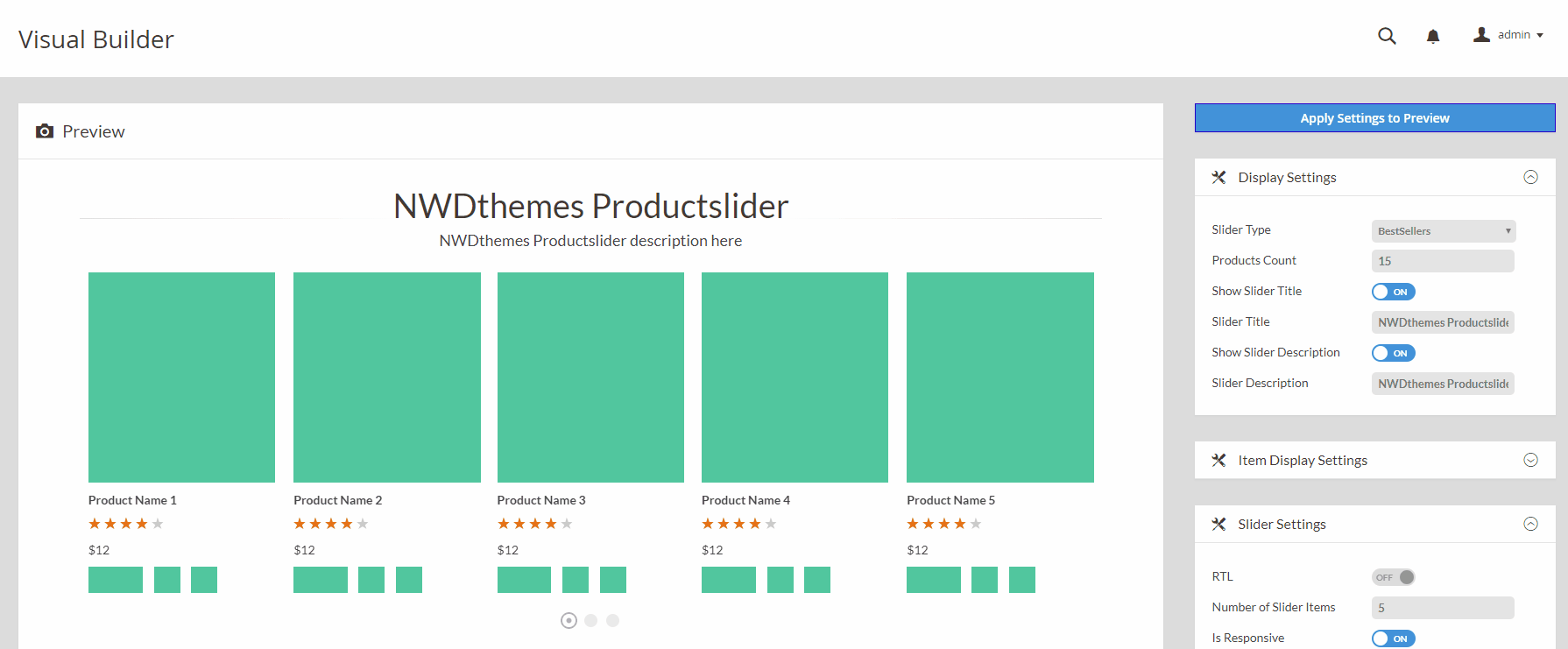

From there, you can drag the sides of the columns to resize, with the other column resizing automatically to fill the row. Simply drag and drop a row onto the main canvas, then move columns onto that row. The admin interface works on a 12-column grid, so you have the flexibility to design pages as you wish.
#Product builder magento plus#
It’s super easy to add rows and columns and resize them in Page Builder, which is a big plus for non-technical users. Since the field labelled ‘Content Heading’ will appear on the page as an H1 header (by default anyway) before any other content, you may choose to leave this field blank and add headers where you need them using the Page Builder Header content type. If you’re creating a new page you’ll need to save it before you can start editing content using Page Builder. Once you click on content, a menu slides out to offer all of the content related functionality, as can be seen below. If you’re editing a product, page or category, you will see a button labelled ‘content’. Creating Content with Page Builderīuilding content pages with Magento’s Page Builder is really straightforward.

Users can also add custom content via HTML. Developers can additionally build out page builder components based on the user’s requirements, such as a NOSTO recommendations block or an interactive image for example. The admin user can simply drag content type elements to the desired position on the page, and then add the relevant content to them.
#Product builder magento full#
Now, instead of the very basic WYSIWYG editor and widgets / blocks that were built into earlier versions of Magento, Page Builder offers a fast and intuitive interface for building product and category content and full content pages. Although very few of the direct Magento competitors have a solid out-of-the-box CMS, Salesforce are due to release their Page Designer solution soon, SAP has a CMS cockpit and Shopify and BigCommerce have Shogun (a third-party add-on), so this was a needed addition. The demand for drag-and-drop content management tools has been growing in popularity for a few years now, so it was almost inevitable that Magento would follow this pattern and build a tool that enabled non-technical users to quickly and easily build content pages and manage key content elements on other templates. Page Builder is a built-in, drag-and-drop style content management solution, which has been factored into the core of Magento Commerce. With the introduction of Page Builder, Magento has at least addressed a significant issue that had caused headaches for retailers, marketing teams and developers for quite some time. Although it took a long time to arrive (after Magento acquired GeneCommerce’s Bluefoot extension in 2016), Magento officially released Page Builder (as part of the 2.3.1 release) earlier this year, which represents a considerable improvement on all aspects of content management previously allowed for in the platform.Īlthough it’s still very new, Page Builder eliminates the need for spending hours trying to put together basic landing pages, or a product page that incorporates a video and a size chart, for example. With all of this in mind and with other competitors investing in content management (such as SAP Hybris and Shopware) and growth around content-native platforms (such as Episerver and Sitecore), it was obvious that Magento 2 needed to address CMS. However, back in these days, platforms weren’t built to work together like they are today (due to lots of progression around APIs in both areas and a general shift towards headless), so this rarely worked well. Paul Smith was a good example of a larger retailer that used a combination of Drupal and Magento when they were on Magento 1 and there are thousands that use WordPress.

With these limitations, a lot of merchants opted to create a hybrid solution – most commonly using CMS platforms like Drupal or WordPress. The content management capabilities in Magento 1.x versions were pretty uninspiring – the WYSIWYG editor didn’t allow for great control and Magento’s widgets and blocks have never been a good fit for eCommerce teams, in my experience. With so much core functionality, as well as likely the biggest eco-system for integrations and extensions, it’s easy to see why Magento is so popular – however, one of the biggest weaknesses of the platform has historically been content management – particularly for brands and higher-end retailers focused on content.


 0 kommentar(er)
0 kommentar(er)
